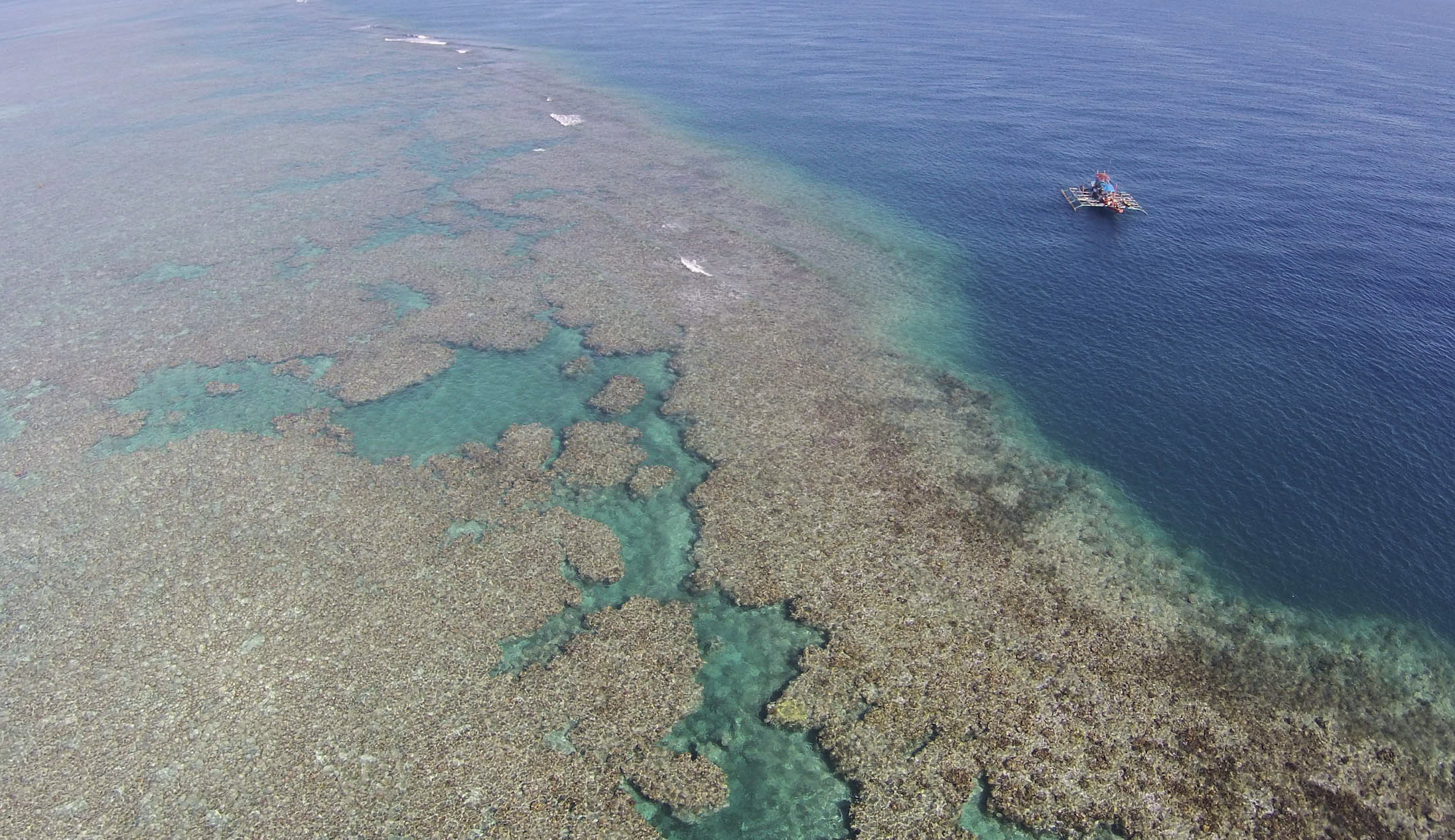
TRADITIONAL FISHING GROUND This 2016 photo taken by a drone camera shows part of Scarborough Shoal, also known as Panatag and Bajo de Masinloc, which is a traditional fishing ground of Filipino fishermen in the West Philippine Sea that is being claimed by China. —REM ZAMORA
MANILA, Philippines — China on Monday said that allegations surrounding Chinese fishermen’s use of cyanide in Philippines’ Bajo de Masinloc are “baseless” and “sheer fabrication.”
An unnamed spokesperson of the Chinese Embassy made the remark in a statement, further claiming that Bajo de Masinloc, which they called Huangyan Dao, is theirs.
“The Chinese Government attaches great importance to the protection of ecological environment and conservation of fishery resources, and have taken resolute measures to crack down on any illegal fishing activities,” the embassy claimed.
The embassy added that “continuous disinformation” has led up to nothing but “exacerbation of the maritime tensions and destabilization of bilateral relations.”
“The groundless speculations, slanders and inconsistent statements of spokespersons of relevant Philippine agencies can only place their professionalism and credibility in doubt,” it added.
The embassy then urged the Philippine government to handle maritime issues with “all seriousness” and meet the Chinese side “halfway in safeguarding bilateral relations as well as peace and stability in the South China Sea.”
The country, through the National Security Council, earlier confirmed that it will probe Chinese fishermen’s supposed use of cyanide in Philippine waters.
NSC Assistant Director General Jonathan Malaya emphasized that they are deeply concerned about the report of the Bureau of Fisheries and Aquatic Resources (BFAR) that Chinese and Vietnamese fisherfolk use cyanide to catch fish in the area.